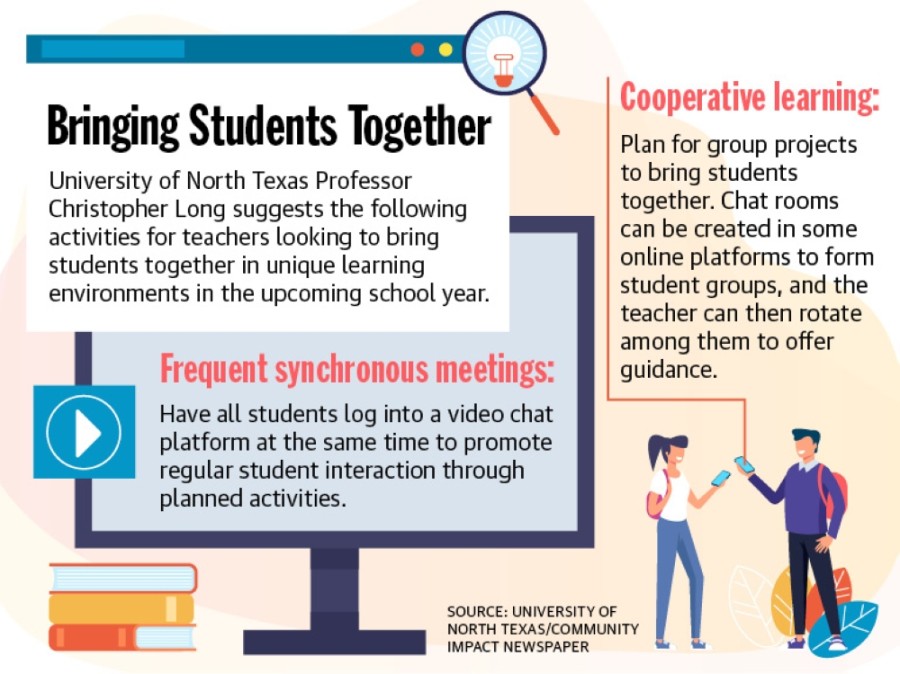Early in the spring 2020 semester, Christopher Long, assistant professor of K-12 science education at UNT, was conducting research on psychosocial perceptions of learning environments with middle school students in Denton using virtual reality headsets.
Once the COVID-19 pandemic made its way to North Texas, the students from Long’s research were sent home for virtual learning, as were the students from his UNT classrooms. The study fell apart soon after, Long said.
But this did not stop the four-year UNT professor’s research. Instead, Long said, he shifted his angle to align with students’ current reality.
“This is affecting these middle schoolers because their whole world has been blown up, as far as school goes,” Long said. “And we looked at our own UNT students, and they were all sent home.”
Long’s research now is centered on students’ “normal” learning environment before the pandemic struck and what it has been like since the rapid shift to online learning, he said. As part of the study, around 230 students from UNT’s education department filled out a survey in the spring semester.
“That falls back on the idea that students are the experts in their learning,” he said. “You can have outsiders look at what’s going on, but if you really want to know what’s happening, you have to actually ask the students.”
The survey aims to analyze five dimensions of learning environments, Long said: student cohesiveness, teacher support, involvement, task orientation and equity.

“[Students] report, in general, that they preferred the way it was before the pandemic,” Long said.
Only quantitative data is available for now, Long said. Early conclusions indicate there are small, but significant differences in students' perceptions of their learning environments pre- and post-COVID-19, he said.
Survey results indicate the most notable drop was in student cohesiveness, Long said.
"[That] means students felt, before the break, like they were part of the class,” he said. “After the break, they kind of lost that feeling."
Knowing this piece of data could help teachers and professors know how to tackle their classrooms in the fall, Long said, especially those planning to use an online format.
“It’s going to take some sitting down and thinking, 'What can I do to make the students feel like they’re part of the class?'” he said.
Long further suggested that teachers be purposeful in their lesson plans to foster interactivity to help mitigate the issues students face with online learning.
“We can’t push our desks together and work anymore, but we can set up chat rooms in Zoom,” he said.





